What's New
Displaying results 1721 - 1730 of 4052
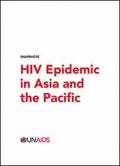
Resource | Reviews and Snapshots,
UNAIDS Snapshot 2016: HIV epidemic in Asia and the Pacific is an interactive report with colourful infographics and bite-size information on the HIV epidemic and response on key populations at higher risk of HIV in Asia and the Pacific.
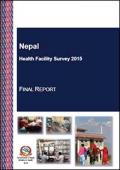
Resource | Publications,
The 2015 Nepal Health Facility Survey (NHFS) is an assessment of health care facilities in the formal sector of Nepal. It was designed to provide information on the availability of basic and essential health care services and the readiness of health facilities to provide quality services to clients. To provide a comprehensive picture of the strengths and weaknesses of the service delivery environment for each assessed service, the 2015 NHFS collected information from all facilities managed by the government and by private not-for-profit nongovernmental organizations (NGOs), private for-profit organizations, and mission/faith organizations in all 75 districts of the country.
The 2015 NHFS provides representative results for Nepal, for different facility types (public hospitals, primary health care centers [PHCCs], health posts [HPs], urban health centers [UHCs], standalone HIV testing and counseling sites [HTCs], and private hospitals), for different managing authorities (government and private), for each of the three geo-ecological regions in the country, and for the area affected by the 2015 earthquake (14 districts).
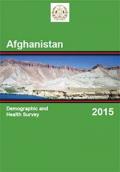
Resource | Publications,
The Afghanistan Demographic and Health Survey (AfDHS) 2015 is the first survey of its kind to be implemented in the country as part of the worldwide Demographic and Health Surveys (DHS) Program.
The 2015 AfDHS is a national sample survey that provides up-to-date information on fertility levels; marriage; fertility preferences; awareness and use of family planning methods; child feeding practices; nutrition, adult, and childhood mortality; awareness and attitudes regarding HIV/AIDS; women’s empowerment; and domestic violence. The target groups were women and men age 15-49 in randomly selected households across Afghanistan. In addition to presenting national estimates, the report provides estimates of key indicators for both the urban and rural areas in Afghanistan and the provinces.
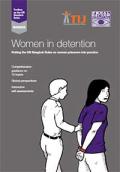
Resource | Tools,
More than 700,000 women and girls are held in prisons around the world. Women are always a small minority in national prison populations – only 2–9 per cent on average. However, their numbers are growing every year, and at a faster rate than for men.
In 2010, the United Nations adopted the Rules for the Treatment of Women Prisoners and Non-Custodial Measures for Women Offenders (the ‘Bangkok Rules’) to give guidance on how to meet the specific needs of women in prison.
Sensitisation and training is a key aspect of implementing the Bangkok Rules at a national level. This Workbook has been designed to support prison staff, policymakers, healthcare practitioners, representatives of intergovernmental and nongovernmental organisations, and other interested stakeholders, to put the Bangkok Rules into practice.
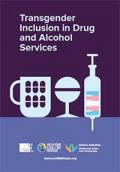
Resource | Publications,
This report details the findings of a survey conducted by the Scottish Trans Alliance into transgender inclusion in drug and alcohol services. The survey was open to any trans person living in Scotland.
The survey focused on three main areas; people’s use of alcohol or other drugs, the way in which their trans identity impacted on their use of alcohol or other drugs, and their concerns about approaching or experiences of using specialist services.
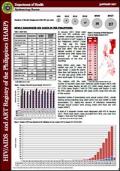
Resource | Fact Sheets,
In January 2017, there were 844 new HIV antibody seropositive individuals reported to the HIV/AIDS & ART Registry of the Philippines (HARP). This was 5% higher compared to the same period last year (804). This was the highest number of cases ever reported since 1984. Eighty-nine percent of those were asymptomatic at the time of reporting.

Resource | Publications,
This year’s report, together with the annual report on precursors, provides an up-to-date analysis on developments in global drug control, as well as recommendations to Governments and relevant international and regional organizations. In the light of the discussions surrounding the thirtieth special session of the General Assembly, the Board’s recommendations in our 2016 publications are aimed at helping States take effective measures and implement comprehensive plans to tackle drug-related challenges. In the report on precursors,2 for example, guidance and information are provided to enable States to enhance information-sharing, develop multilateral operational cooperation and implement measures for preventing the diversion of chemicals used in the illicit manufacture of drugs.
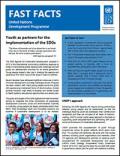
Resource | Publications,
Recent decades have witnessed significant advances in terms of human development, but deep challenges remain. Progress has been uneven, with many young people across the globe still experiencing interlocked forms of discrimination, limited political inclusion, high levels of poverty, and limited access to health systems, educational opportunities and decent jobs.
The goals and targets of the 2030 Agenda are interconnected, aiming to integrate the three dimensions of sustainable development: economic, social and environmental. Explicitly or implicitly, young people are deeply embedded within their fabric. Their knowledge, reach and innovative solutions are essential if sustainable development is to be realized.
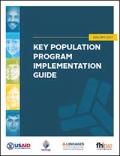
Resource | Guidelines,
Key populations — sex workers (SWs), gay men and other men who have sex with men (MSM), transgender people (TG), and people who inject drugs (PWID) — are disproportionately affected by HIV. At the same time, the stigma, discrimination, and threat of criminal prosecution faced by key populations around the world pose serious barriers to their ability to access high-quality, rights-based health care.
This implementation guide will be useful for LINKAGES staff members wherever the program is operating, and for organizations that implement the LINKAGES program at the local level ("on the ground"). Although the guide may help partners working with LINKAGES at the country level, such as Ministries of Health, the guide is designed for LINKAGES country programs. The guide is not exhaustive. It does not cover every intervention that could be useful, and it does not go into great detail about every aspect of an intervention. Instead, it aims to give information on the essential elements of the LINKAGES program, and to help standardize country programs based on proven, high-quality interventions from other countries.
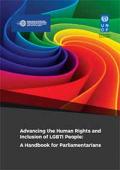
Resource | Tools,
Advancing the Human Rights and Inclusion of LGBTI People: A Handbook for Parliamentarians has been jointly produced by the United Nations Development Programme (UNDP) and Parliamentarians for Global Action (PGA). This Handbook sets out relevant human rights frameworks and highlights the role of parliamentarians in implementing Agenda 2030, to ensure no one, including LGBTI people, is left behind. It offers practical tips, tools and resources designed to support parliamentarians to undertake legislative, representational and oversight activities that advance the rights and inclusion of LGBTI people.
A wide range of diverse examples are presented, each reflecting concrete efforts undertaken by parliamentarians in every region of the world in support of the human rights and inclusion of LGBTI people. These examples provide valuable insights and lessons learned. They vary in approach and style, as the context and strategies employed are context driven. Some of the examples may be relevant in a wide range of countries, while others may have a more limited applicability.





